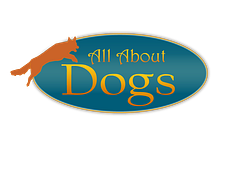Book Now
Beginner Agility (Level 3)
Level 3 builds on the skills developed in Levels 1 and 2, helping teams gain...Level 3 builds on the skills developed in Levels 1 and 2, helping teams gain confidence and proficiency on a wider range of agility equipment while strengthening teamwork and communication. At this stage, dogs are actively working on contact obstacles, including the teeter, dog walk, and A-frame, with a focus on safety and proper technique.
The nose touch targeting behavior introduced in Level 1 is now fully integrated with the dog walk and A-frame, giving dogs a clear understanding of how to navigate these obstacles successfully. Elements of the teeter totter are introduced gradually, allowing dogs to build balance and confidence at their own pace.
Classes are structured with station-based training, where handlers and dogs move from one exercise area to another, maximizing individual training time and ensuring focused practice on each skill. In addition to equipment work, teams begin to link short sequences of tunnels and jumps, learning how to read and respond to handling cues while improving course flow.
Because multiple teams are working on the floor at the same time, dogs must have strong focus and attention to their handler. This level prepares both dog and handler to move toward more complex courses and lays the foundation for success in higher levels of agility training or competition.
Beginner Agility (Level 3)
Level 3 builds on the skills developed in...Level 3 builds on the skills developed in Levels 1 and 2, helping teams gain confidence and proficiency on a wider range of agility equipment while strengthening teamwork and communication. At this stage, dogs are actively working on contact obstacles, including the teeter, dog walk, and A-frame, with a focus on safety and proper technique.
The nose touch targeting behavior introduced in Level 1 is now fully integrated with the dog walk and A-frame, giving dogs a clear understanding of how to navigate these obstacles successfully. Elements of the teeter totter are introduced gradually, allowing dogs to build balance and confidence at their own pace.
Classes are structured with station-based training, where handlers and dogs move from one exercise area to another, maximizing individual training time and ensuring focused practice on each skill. In addition to equipment work, teams begin to link short sequences of tunnels and jumps, learning how to read and respond to handling cues while improving course flow.
Because multiple teams are working on the floor at the same time, dogs must have strong focus and attention to their handler. This level prepares both dog and handler to move toward more complex courses and lays the foundation for success in higher levels of agility training or competition.
- Service
- Date
- Profile
- Pet
- Payment
- Done
